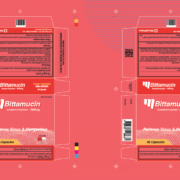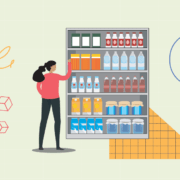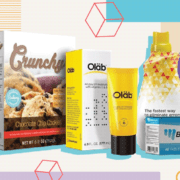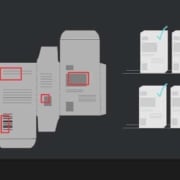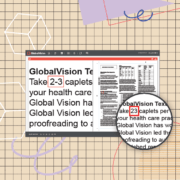All the Popular Printing Methods from Letterpress to Digital
Date: March, 2019 | Category: Proofreading | Author: Ryan Szporer
The invention of the printing press is often understated in terms of its importance, with the advent of the digital age in which we now live.
It’s true that these days, people can go entire days without reading something that’s been printed out thanks to the internet. However, not only has “digital” actually come to define an entire sub-sector within the printing industry, but, without the press, which promoted widespread literacy, who knows where we would be right now? Not to mention how it’s not just literature and collateral that gets printed out, but images and patterns on textiles that people use every day in the real world.
That digital sub-sector is also growing, and growing rapidly, with the implication being that rumors of the demise of the printing industry have been greatly overstated. And “digital” is but one method of man that printers use, with each of the below having their own unique applications. From letterpress to digital, here are the most popular printing methods today:
Letterpress Printing Method
Also known as typographic printing, letterpress dates back to Johannes Gutenburg’s 15th-century invention of the printing press. While the process, which involves hard-pressing an inked surface with elevated letters and images onto a substrate (printing surface), is one of the oldest available, it still remains prominent within the printing industry.
Two types of letterpress machines are the most common nowadays. For one, flatbed cylinder presses, on which the substrate is placed on a traditionally horizontal surface while a revolving cylinder applies pressure and makes the print, are renowned for operating slowly and topping out at 5,000 impressions per hour.
The other, the rotary press, features a master on one cylinder and a printing surface that is pulled between it and a second once the process starts. Able to make 20,000 to 30,000 impressions per hour, the rotary press is in the process of usurping the flatbed in terms of popularity.
Flexography Printing Method
Essentially an offshoot of letterpress, flexography is a form of relief printing that specializes in labels on cans and boxes. Presses run at high speeds and are typically very versatile, able to print cartons and labels on a variety of substrates on the same machine.
Plates, which form the print information and transfer the ink to the substrate, are made of rubber, making the process a relatively inexpensive one used primarily for short runs. The rubber plate wraps around a cylinder and picks up ink that will ultimately be deposited on the substrate. The flip side is that, unfortunately, the plates are very fragile and need to be replaced often.
Gravure Printing Method
Gravure printing is essentially the opposite of letterpress. The design to be printed is etched instead of elevated on a metallic master. The individual “cells” that are created contain the ink. Deeper cells result in darker tones.
Gravure tends to be more of an expensive process relative to flexography and is best suited for longer runs. Like flexography, gravure is common for packaging jobs within the packaging. Cylinders last significantly longer though. That’s one of several benefits, including consistent, high-quality results achieved with fast-drying ink that rivals the high-speed process itself.
Offset Lithography Printing Method
Offset lithography is a planographic printing process. So, whereas letterpress image areas are elevated and gravure image areas are recessed, they are on the same plane as the non-image areas for offset. Here, image and non-image areas are chemically separated.
The “offset” in the name refers to the presence of a third cylinder in the process besides the plate and impression ones. So, instead of the ink being directly applied from the master as it is with other methods, a rubber blanket serves as an intermediary between those cylinders.
Offset, which specializes in printing paper products like inserts and leaflets, is one method of choice in industries like pharma, in part because pharmaceutical collateral and packaging components call for fewer colors. For example, a typical press features multiple printing units, each devoted to a single color for one side of the printer. So, a single-color press has one unit, while a press with four units prints in cyan, magenta, yellow, and black (CMYK).
To print on both sides you can wait until the first has finished and the ink has dried before flipping the job over and restarting. You also have the option of adding a reversing cylinder to the mix and then another printing unit for each color. So, eight in total for four colors.
Therein lies the main disadvantage of offset printing: It may be fast (120,000 pages per hour), result in high-quality prints, and be ideal for long print runs. It’s expensive and incredibly technical though, generally requiring special operating expertise.
Screen Printing Method
The screen printing process, as its name would suggest, involves ink being forced through fabric (or screen) onto the image areas of the printing surface. Also known as porous printing for obvious reasons, it culminates in a squeegee pushing the ink through, while a stencil, manually cut or made electronically, prevents the non-image areas from getting colored. The process is repeated for each color on a new screen.
The benefits are such that the process can be used on a wide range of substrates, which don’t have to be flat for an effective job to be done. T-shirts are one example of a product printed using this method. Electronic circuits are another. Screen-printing equipment can be relatively inexpensive and the process itself is simple and suitable for small-scale jobs
Digital Printing Method
Two types of digital printing make up the lion’s share of the jobs in this space: Inkjet and xerography. Inkjet printers effectively spray the ink on the substrate in tiny dots that appear as solid colors from afar. Xerographic or laser printers rely on a charged internal cylinder to attract toner that gets transferred to the substrate. While you might use a laser printer for everyday office work, large-scale print shops use them as well for a variety of print jobs.
Digital printing’s lack of contact between the master and substrate makes for great versatility, enabling a wide variety of materials, both delicate and not, to be used as printing surfaces. Digital printing is great for short (and, more and more, long) runs, even allowing for variability between individual prints. Some examples include mailing addresses and, much more famously, The Coca-Cola Company’s campaign featuring personalized names on bottles. Each print can be completely unique, offering a degree of flexibility that other methods can’t.
As digital printing is more so the product and subsequent focus of technological advancement, it stands to gain more ground in the industry. In 2017, digital printing accounted for 16.2% of the global print market. While lithography still dominates (70%), digital is up from 2.9% in 2012, indicating potential for exponential growth moving forward.
Nevertheless, regardless of the technology at your disposal or your preferred printing method, digital tools that promote error-free quality control are readily available. Check for content errors during the pre-press phase and verify samples early on, in the middle, and at the very end of the actual job.
Prevent wasted resources in case of print defects and ensure the print quality stays high throughout. Contact GlobalVision for more details on how to incorporate a custom solution tailored to your specific printing situation into your workflow.
_________________________________________________________________________________________
Ensure your content is always error-free in record time with GlobalVision. Try it now for free.
Keep up with the latest updates in automated quality control. Sign up for our newsletter.



